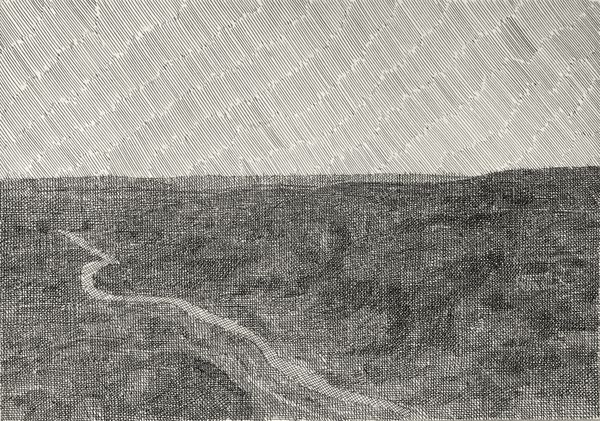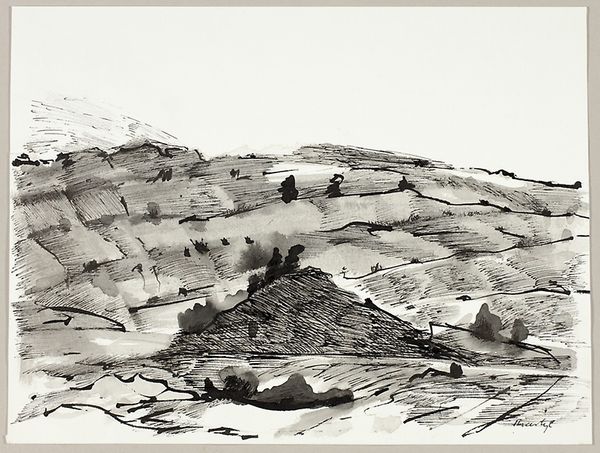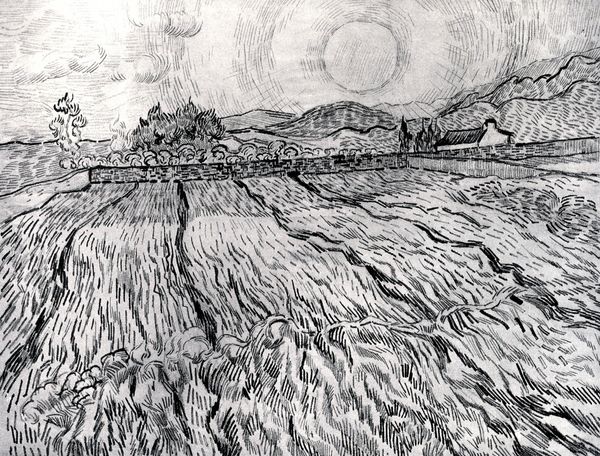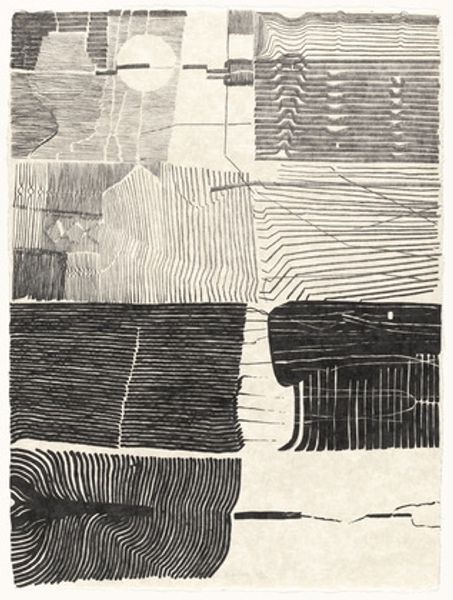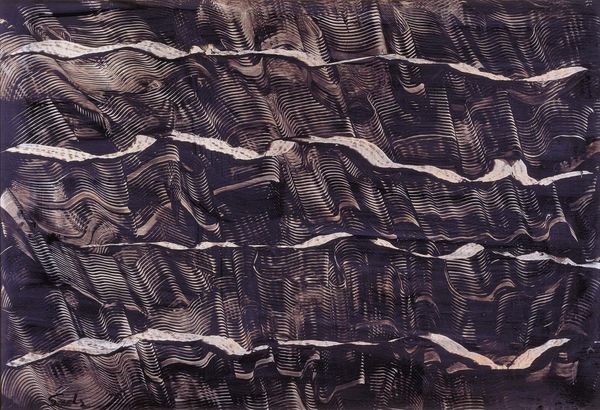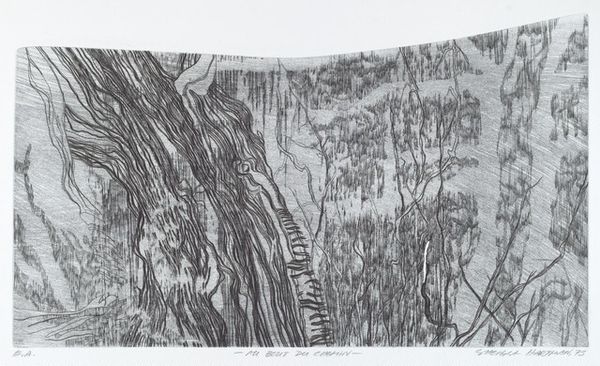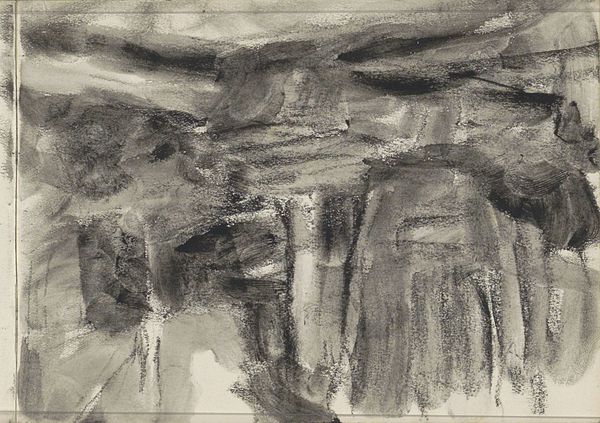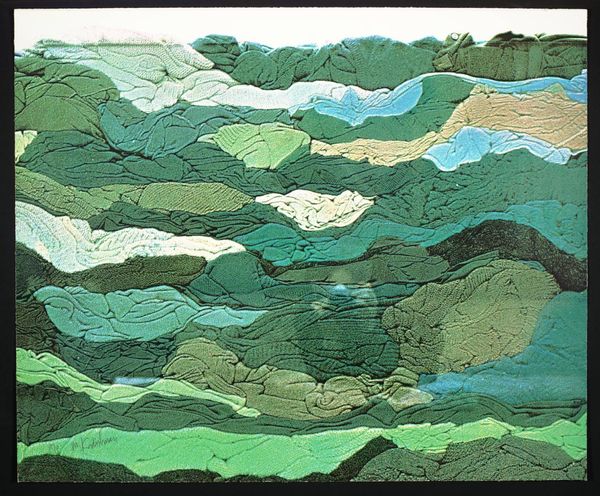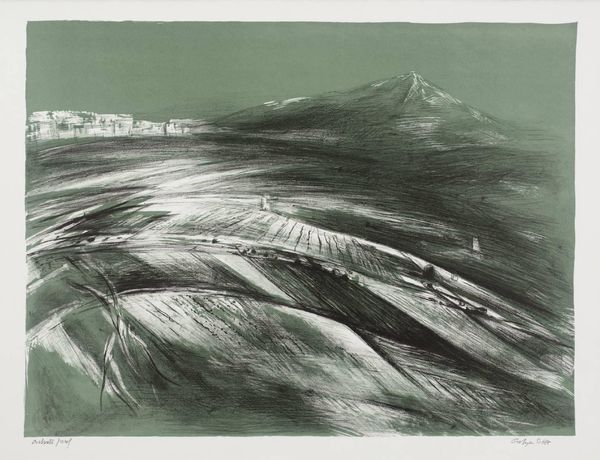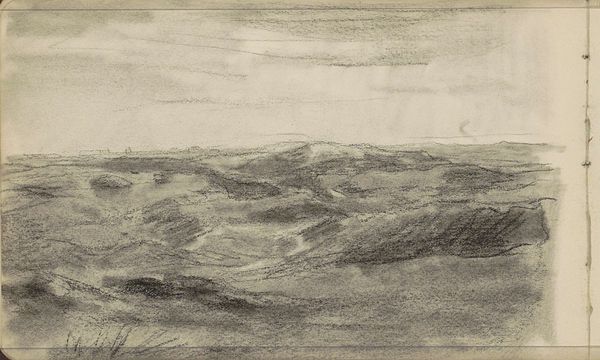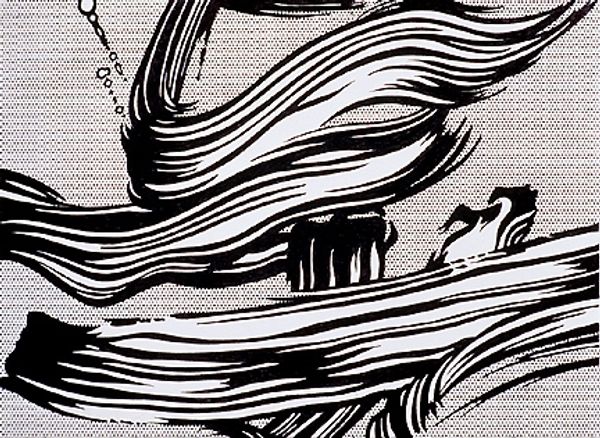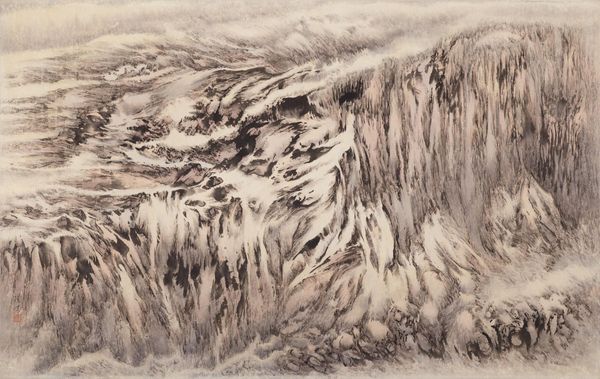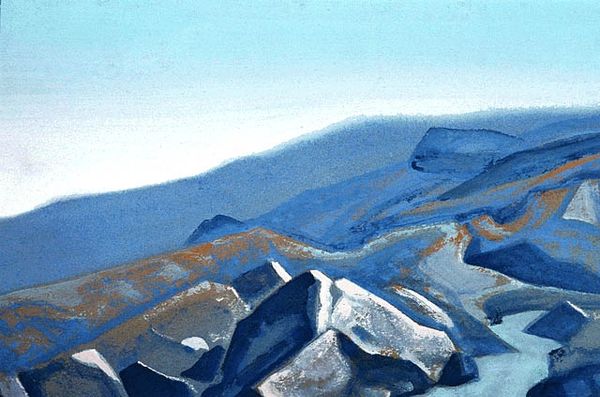
print, woodcut
#
natural shape and form
# print
#
textured surface
#
pattern
#
landscape
#
crosshatching
#
form
#
geometric
#
woodcut
#
water
#
line
#
natural texture
#
monochrome
Copyright: Hryhorii Havrylenko,Fair Use
Editor: So, here we have Hryhorii Havrylenko's "Landscape," created in 1960. It's a woodcut print. The stark monochrome and the way the lines carve out the scene make me think of manual labor, almost like tilling the land itself. What strikes you about this work? Curator: The first thing I see is process. Woodcut is inherently linked to labor; the physical act of carving dictates the image. Those precise, repetitive lines—aren’t they a record of the artist's engagement with the material, emphasizing production? How might this process reflect broader Soviet-era values placed on labor? Editor: That's interesting, I hadn't considered the social context so directly. I was focusing more on how the lines create a sense of depth and texture in the landscape. Curator: Texture created through labor. Consider what the materiality suggests: The printmaking medium allowed for wider dissemination than, say, a painting. Is Havrylenko democratizing landscape? Perhaps critiquing elite consumption through accessible art? How does the material, so humble, intersect with themes of the land, and its people? Editor: I guess it does make the landscape, which is typically seen as this grand, romantic thing, more accessible and grounded. I can see that now. Do you think the geometric forms and patterns also play a role in this interpretation? Curator: Absolutely! Are those repeating patterns suggesting imposed order or celebrating natural texture? Reflecting on mass production, can't the rigid line work mimic the organized structures from manufacturing in Ukrainian identity? And look closer at that paper; think about how that material too was processed for mass dissemination. Every layer underscores questions around how it got made, who gets access to images, and where it circulated. Editor: This really changes how I see it. It’s not just a landscape; it’s about labor, production, and accessibility. Curator: Precisely. Havrylenko provides space to reflect and contemplate beyond just visual appeal but within the realm of critical engagement with modes of creation and its historical, geographical specificities.
Comments
No comments
Be the first to comment and join the conversation on the ultimate creative platform.
